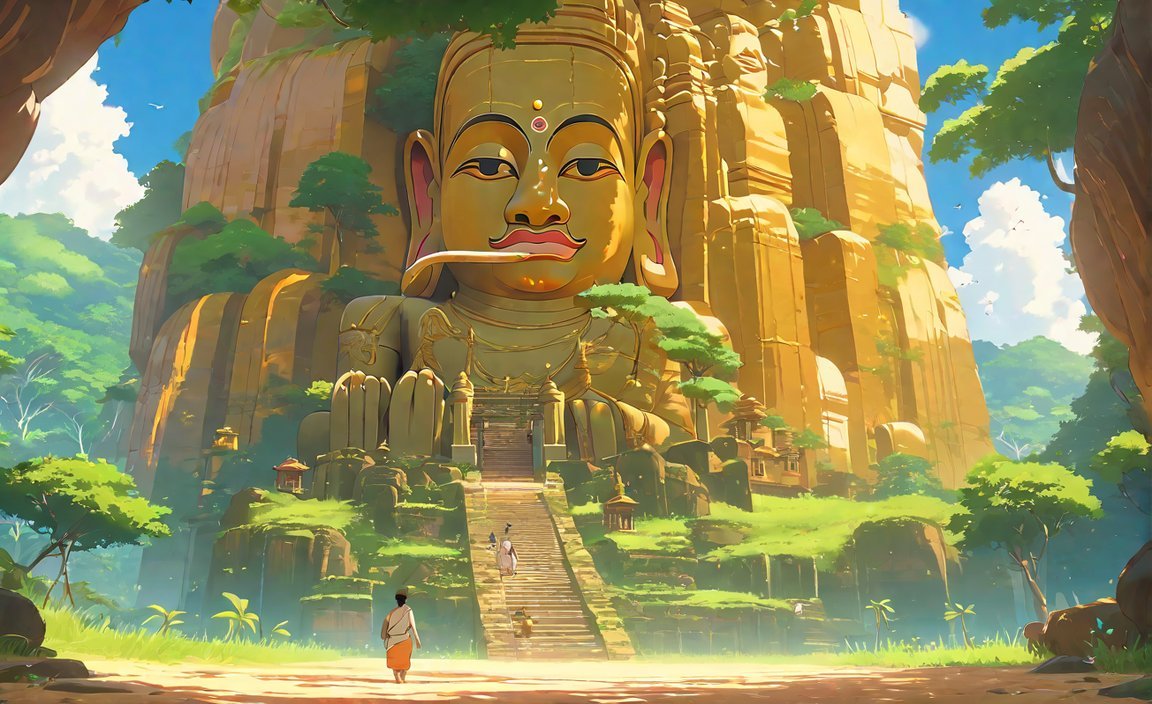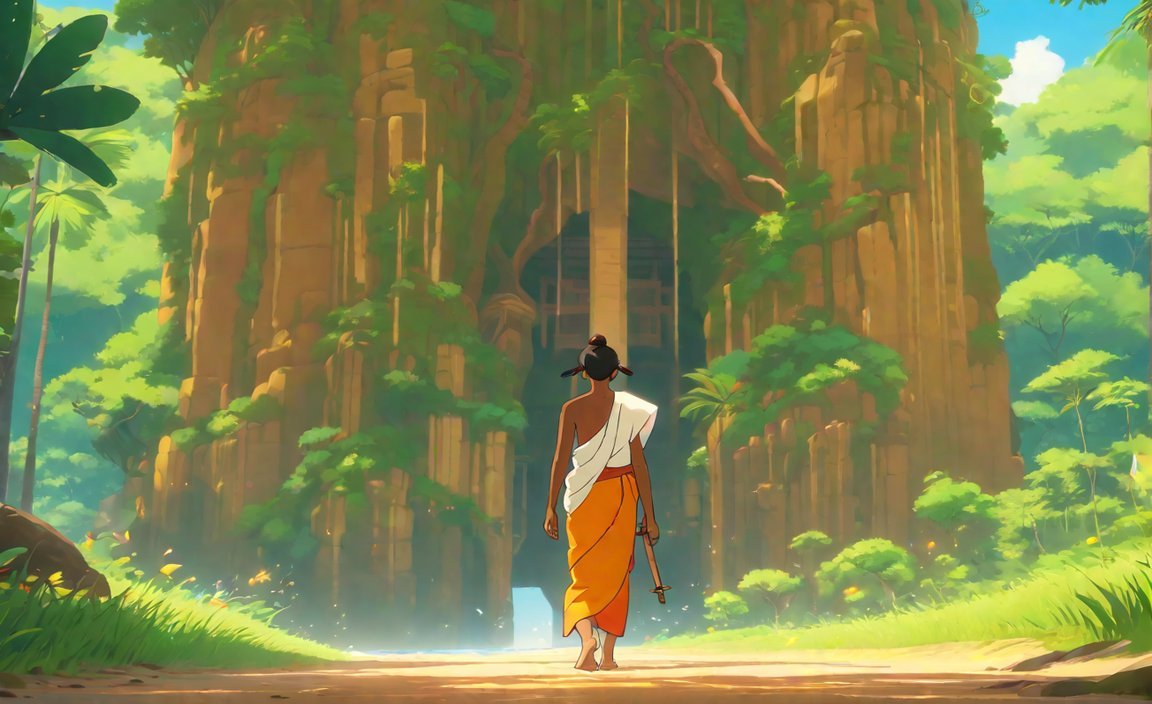Embark on a journey to uncover the hidden wonders of Sri Lanka – a land that holds captivating secrets waiting to be revealed. From its vibrant streets teeming with life to the awe-inspiring tea plantations and age-old temples, this enchanting island nation offers a treasure trove of unique experiences and cultural insights. Join us as we delve into the depths of this fascinating destination, one fun fact at a time. Get ready to be amazed by the lesser-known facets of Sri Lanka that will leave you yearning to explore its captivating beauty.
Key Takeaways: Discover a Fun Fact About Sri Lanka: Unveiling Hidden Wonders!
- Sri Lanka was colonized by the Portuguese, the Dutch, and the British before gaining independence.
- Sri Lanka has three official languages: Sinhala, Tamil, and English.
- Sri Lankans have a unique way of expressing themselves by wobbling their heads.
- Eating with hands is a common practice in Sri Lanka, and locals enjoy engaging in various games.
- The oldest living tree planted by man is in Sri Lanka.
- Sri Lanka is known for its biodiversity and is home to many endemic and endangered animal species.
- Stilt fishing, a traditional and unique method of fishing, is practiced in Sri Lanka.
- Lipton Tea, a well-known brand, was created in Sri Lanka.
- The national sport of Sri Lanka is volleyball, not cricket.
- Sri Lanka has one of the world’s least powerful passports with limited visa-free travel options.
Fun Fact About Sri Lanka

Colonial History
- Portuguese, Dutch, and British Rule: Did you know that Sri Lanka has a fascinating colonial past? It was colonized by the Portuguese, the Dutch, and the British before gaining independence in 1948. The Portuguese first arrived on the island in 1505, followed by the Dutch in 1658, and finally, the British in 1796. Sri Lanka, formerly known as Ceylon, was under colonial rule for several centuries.
Cultural Diversity
- Languages and Unique Expressions: Sri Lanka is a country of cultural diversity. It has three official languages: Sinhala, Tamil, and English. But here’s a fun fact: Sri Lankans have a unique way of expressing themselves. They wobble their heads in a distinctive manner to convey different meanings, creating a rich and vibrant form of communication.
- Eating with Hands and Engaging in Games: Another interesting aspect of Sri Lankan culture is the common practice of eating with hands. Locals believe that using their fingers enhances the flavors of the food. Additionally, Sri Lankans love to engage in various games, showcasing their lively and playful spirit.
Natural Wonders
- The Oldest Living Tree: Sri Lanka is home to the oldest living tree known to be planted by man. This amazing tree, called Jaya Sri Maha Bodhi, is over 2,000 years old and holds great religious significance for Buddhists around the world. It stands as a testament to the country’s rich history and connection with nature.
- Biodiversity Hotspot: Sri Lanka is considered a biodiversity hotspot, teeming with unique flora and fauna. It is home to numerous endemic and endangered animal species, making it a paradise for nature enthusiasts. From majestic elephants to elusive leopards, the wildlife in Sri Lanka never fails to impress.
- Stilt Fishing and Lipton Tea: Sri Lanka is also known for its distinctive traditions and products. Stilt fishing is a traditional and unique method of fishing practiced by the locals. Fishermen stand on wooden stilts planted in the shallow coastal waters, skillfully balancing themselves as they cast their nets.
- On a lighter note, did you know that Lipton Tea, a globally renowned brand, was actually created in Sri Lanka? The country’s lush tea plantations produce some of the finest teas in the world, offering a delightful experience for tea connoisseurs.
National Sport and Passport Power
- Volleyball, Not Cricket: Contrary to popular belief, the national sport of Sri Lanka is volleyball, not cricket. Volleyball has gained immense popularity among Sri Lankans and represents their passion for sports.
- Limited Visa-Free Travel: Sri Lanka holds an interesting distinction when it comes to passport power. Its citizens have one of the world’s least powerful passports, offering limited visa-free travel options. This unique aspect adds to the allure of exploring this enchanting island nation.
These fun facts about Sri Lanka provide a snapshot of the country’s rich history, diverse culture, and breathtaking natural wonders. Whether you’re captivated by the colonial influences, intrigued by the unique expressions of the locals, or drawn to the stunning flora and fauna, Sri Lanka offers a multitude of hidden wonders waiting to be discovered.
Sources:
– Goway Travel
– FactRetriever
– Atlas & Boots
Here are some interesting facts about different countries that you might find fascinating:
- Fun Fact About Sweden: Did you know that Sweden has more than 95,700 lakes, making it a true paradise for water enthusiasts?
- Fun Facts of Nepal: Nepal is not only home to the highest peak in the world, Mount Everest, but it also has a living goddess named Kumari who is believed to be the reincarnation of the Hindu goddess Durga.
- Fun Facts About Armenia: Armenia is known for its rich cultural heritage and is the first country in the world to adopt Christianity as its state religion, way back in 301 AD!
- Something Interesting About Honduras: Prepare to be amazed by the stunning ancient Mayan ruins in Honduras, such as Copán, which are not only a UNESCO World Heritage site but also provide a fascinating glimpse into the Mayan civilization.
- Fun Facts About Albania: Albania is home to the beautiful Albanian Alps, where you can find stunning landscapes, crystal-clear rivers, and a diverse flora and fauna that will leave you in awe.
So, if you’re looking to uncover intriguing facts about these countries, click on the links above to delve into their captivating stories!
Sri Lanka is the world’s leading exporter of tea
Tea lovers, prepare to be amazed! Hidden among the enchanting landscapes and rich cultural heritage of Sri Lanka, there lies a fascinating fact that sets this island nation apart. Brace yourself as we dive into the world of tea, where Sri Lanka takes center stage as the leading exporter of tea.
Key Takeaways:
– Sri Lanka accounts for 20% of global black tea exports and 18% of global green tea exports[^1^].
– Sri Lanka’s tea industry boasts being the largest producer of orthodox tea in the world[^2^].
– As the fourth-largest tea producer globally, Sri Lanka has made its mark on the tea scene[^3^].
– In 1995, Sri Lanka held the prestigious title of being the world’s leading tea exporter, with a staggering 23% of the total world export[^4^].
– Although China currently surpasses Sri Lanka in terms of tea export earnings, Sri Lanka ranks a commendable second place globally[^5^].
Now, let’s immerse ourselves into the captivating world of Sri Lanka’s tea production!
A Brew-tiful Journey
Imagine wandering through lush green landscapes, surrounded by rolling hills cascading with meticulously tended tea bushes. Sri Lanka’s tea plantations offer an unparalleled sight, where emerald hues dance in harmony with the whispering winds. It’s here, amid the breathtaking scenery, that the journey of Sri Lanka’s tea begins.
From the Hills to the Cup
Sri Lanka’s unique geography and climate create the perfect conditions for cultivating top-quality tea. The island’s central highlands, specifically regions like Nuwara Eliya and Kandy, boast an elevation of up to 6,000 feet. This altitude, coupled with the delightful tropical climate, creates the ideal environment for tea production.
The process begins with hand-picking tea leaves from the evergreen tea bushes, ensuring only the finest leaves make the cut. These leaves then embark on a fascinating journey, transforming from raw natural beauty to the fragrant beverage we all adore.
The Art of Tea Production
Once picked, these leaves undergo an intricate process, each step carefully orchestrated to retain their distinct characteristics. By preserving the leaves’ natural flavors, Sri Lanka produces tea with a unique taste and aroma that tea enthusiasts worldwide crave.
First, the leaves are withered, a delicate process that removes excess moisture. Following this, they are rolled and oxidized, a crucial step that determines whether the tea will be classified as black, green, or oolong.
For black tea production, oxidation is allowed to occur, imparting its signature rich and bold flavor. In contrast, green tea undergoes minimal oxidation to preserve its delicate taste and vibrant green color.
A Cup Full of Heritage and Flavor
Sri Lanka’s tea heritage goes beyond its mesmerizing landscapes and skilled craftsmanship. With every sip, you experience a piece of history, a journey through time that began when British colonizers introduced tea cultivation to the island in the 19th century.
Today, the legacy continues as Sri Lanka’s tea industry thrives, enriching livelihoods and communities across the nation. It’s no wonder that Ceylon Tea, as it’s known worldwide, has earned a place among the most sought-after teas globally.
A Taste of Sri Lanka’s Tea
Now that we’ve unveiled this hidden gem, it’s time to indulge in the wonders of Sri Lanka’s tea. Whether you’re a connoisseur or a casual tea enthusiast, a piping hot cup of Ceylon Tea promises a symphony of flavors that will captivate your senses.
Awaken your taste buds with the bold notes of black tea, or savor the subtle nuances in a delicate cup of green tea. From herbal infusions to aromatic blends, Sri Lanka’s tea offers a delightful journey of discovery for every tea lover.
As you sip your favorite brew, take a moment to appreciate the dedication and artistry that goes into every tea leaf. It’s the passion and expertise of Sri Lanka’s tea producers that have carved the nation’s reputation as the world’s leading exporter of tea.
In conclusion, Sri Lanka’s tea heritage is much more than a mere fun fact; it’s a testament to the country’s rich culture and remarkable achievements. So, the next time you savor a cup of tea, remember the hidden wonders that lie within the emerald isle, waiting to be explored.
Sources:
– 5 Leading Tea Exporting Countries Globally and Their Market Share
– Tea Exporters Association Sri Lanka (TEA)
Unveiling Hidden Wonders: Sri Lanka’s Unique Celebration of King Mahasena, the World’s First Farmer
Have you ever heard of a country dedicating an entire day to honor the world’s first farmer? Well, Sri Lanka does just that! It is the only country in the world to dedicate a full day to celebrate the world’s first farmer, King Mahasena. This unique and fascinating tradition sheds light on the rich cultural heritage and deep-rooted agricultural history of this enchanting island nation. Let’s dive deeper into this captivating celebration and uncover the hidden wonders of Sri Lanka!
The Celebration of King Mahasena: A Day to Remember
In Sri Lanka, the 1st of December is a significant day for the farming community and agriculture enthusiasts. It serves as a tribute to King Mahasena, who is considered the world’s first farmer. This day is dedicated to celebrating his contributions to agriculture and recognizing the vital role of farmers in sustaining the nation’s economy and food security.
The Origins of King Mahasena: A Pioneer in Agriculture
King Mahasena, the ruler of Sri Lanka during the 3rd century, made remarkable advancements in agriculture, revolutionizing farming techniques and transforming the agricultural landscape of the island. His innovative methods included constructing extensive irrigation systems, developing reservoirs, and introducing advanced farming practices. These interventions played a crucial role in boosting crop production and fostering agricultural prosperity in Sri Lanka.
A Day of Festivities: Immersing in Tradition
On the 1st of December each year, Sri Lanka rejoices in the celebration of King Mahasena, immersing in a tapestry of vibrant traditions and joyous festivities. The country comes alive with colorful parades, cultural dances, musical performances, and artistic displays that showcase Sri Lanka’s rich heritage and agrarian roots.
Honoring Farmers: Acknowledging the Backbone of Sri Lanka’s Economy
The heart of this celebration lies in paying tribute to the hardworking farmers who toil in the fields day in and day out to provide sustenance for the nation. In recognition of their indispensable contribution, farm families are felicitated and honored for their dedication and resilience. It is a time of appreciation and gratitude for their tireless efforts in ensuring food security and sustaining the agricultural ecosystem of Sri Lanka.
Cultural Extravaganza: Showcasing Sri Lanka’s Heritage
As the festivities unfold, visitors have the opportunity to witness a captivating display of Sri Lanka’s vibrant culture. Traditional dancers adorned in colorful attire gracefully move to the rhythm of traditional music, captivating spectators with their skillful performances. Intricately crafted floats adorned with vibrant flowers parade through the streets, narrating tales of Sri Lanka’s agricultural history. The celebration also features traditional games, handicraft exhibitions, and culinary delights, offering a sensory feast for all who partake.
Key Takeaways:
- Sri Lanka dedicates a full day, the 1st of December, to celebrate King Mahasena, the world’s first farmer.
- The celebration honors the contributions of King Mahasena in revolutionizing agricultural practices.
- Festivities include parades, cultural dances, musical performances, and artistic displays.
- Farmers are acknowledged and honored for their dedication and resilience.
- The celebration showcases Sri Lanka’s rich heritage and agrarian roots.
Sources:
– https://www.nationsonline.org/oneworld/Sri_Lanka/national_holidays.htm
–
Sri Lanka’s UNESCO World Heritage Sites
Sri Lanka is a country rich in cultural and historical treasures, boasting eight UNESCO World Heritage Sites. These sites represent the country’s ancient cities, temples, and natural wonders. Let’s explore these remarkable destinations:
Ancient City of Sigiriya
The Ancient City of Sigiriya, also known as “The Lion’s Rock,” is an ancient fortress and palace located atop a 180-meter rock. Built during the reign of King Kashyapa I, Sigiriya is famous for its impressive frescoes and beautifully landscaped gardens.
Sacred City of Anuradhapura
As one of the oldest continuously inhabited cities in the world, the Sacred City of Anuradhapura dates back to the 6th century BC. It served as the capital of the Kingdom of Anuradhapura and is home to numerous ancient monuments, including stupas, temples, and ancient reservoirs.
Ancient City of Polonnaruwa
Once the second capital of Sri Lanka, the Ancient City of Polonnaruwa mesmerizes visitors with its well-preserved ancient ruins. Highlights include the Royal Palace, the Gal Vihara rock temple, and the Parakrama Samudra artificial lake.
Sacred City of Kandy
Located in the central highlands of Sri Lanka, the Sacred City of Kandy offers immense cultural significance. It is home to the Temple of the Sacred Tooth Relic, which houses a tooth relic of the Buddha. Kandy is also renowned for its annual Esala Perahera festival.
Southern city of Galle and its Fortifications
The southern city of Galle is a historic gem situated on the southwestern coast of Sri Lanka. Its fortifications date back to the 16th century when the city was a major trading port for the Portuguese, Dutch, and British. Today, Galle’s fort area boasts a charming blend of colonial architecture and modern amenities.
Sinharaja Forest Reserve
Sri Lanka’s Sinharaja Forest Reserve is one of the two natural UNESCO World Heritage Sites in the country. As the last remaining primary rainforest, this reserve teems with a diverse range of endemic species, including rare amphibians and birds.
Golden Temple of Dambulla
The Golden Temple of Dambulla is an awe-inspiring cave temple complex adorned with ancient murals and over 150 statues. This cultural site holds immense importance in Sri Lanka’s history.
Central Highlands of Sri Lanka
Designated as a UNESCO World Heritage Site in 2010, the Central Highlands of Sri Lanka is a protected land filled with lush forests, cascading waterfalls, and remarkable biodiversity. National parks like Horton Plains and the Knuckles Mountain Range offer unforgettable experiences for nature enthusiasts.
Sri Lanka’s UNESCO World Heritage Sites showcase the country’s rich history, captivating culture, and breathtaking natural beauty. Each site has its own unique story, waiting to be discovered and appreciated.
Key Takeaways:
- Sri Lanka is home to eight UNESCO World Heritage Sites.
- These sites encompass ancient cities, temples, fortifications, and natural wonders.
- Sigiriya, Anuradhapura, and Polonnaruwa are historical gems showcasing Sri Lanka’s ancient civilizations.
- Kandy holds cultural significance with its Temple of the Sacred Tooth Relic and vibrant Esala Perahera festival.
- Galle’s fort area offers colonial charm and a glimpse into Sri Lanka’s colonial history.
- Sinharaja Forest Reserve preserves the country’s primary rainforest and endemic species.
- The Golden Temple of Dambulla captivates with its rock-cut cave shrines adorned with murals and statues.
- The Central Highlands of Sri Lanka are a haven for lush forests, waterfalls, and diverse biodiversity.
Sources:
– List of World Heritage Sites in Sri Lanka – Wikipedia
– 8 UNESCO World Heritage Sites in Sri Lanka | Blue Lanka Tours

FAQ
Q1: What is the colonial history of Sri Lanka?
A1: Sri Lanka was colonized by the Portuguese, the Dutch, and the British before gaining independence in 1948.
Q2: How many official languages does Sri Lanka have?
A2: Sri Lanka has three official languages: Sinhala, Tamil, and English.
Q3: What are some unique cultural practices in Sri Lanka?
A3: Sri Lankans have a unique way of expressing themselves by wobbling their heads to convey different meanings. Eating with hands is a common practice, and locals enjoy engaging in various games.
Q4: What are some of the natural wonders in Sri Lanka?
A4: Sri Lanka is home to the oldest living tree known to be planted by man. It is also considered a biodiversity hotspot and has numerous endemic and endangered animal species. Additionally, stilt fishing, a traditional and unique method of fishing, is practiced in Sri Lanka.
Q5: What is the national sport of Sri Lanka?
A5: Contrary to popular belief, the national sport of Sri Lanka is volleyball, not cricket. Additionally, Sri Lanka has one of the world’s least powerful passports, limiting its citizens’ visa-free travel options.
- Georgia Platform: A Southern Strategy, 1850s - March 31, 2025
- How many weeks is 40 days: Quick Conversion Guide for Accurate Results - March 31, 2025
- How many feet is 300 meters? 984 Feet: Understand Length Conversions Easily - March 31, 2025
















